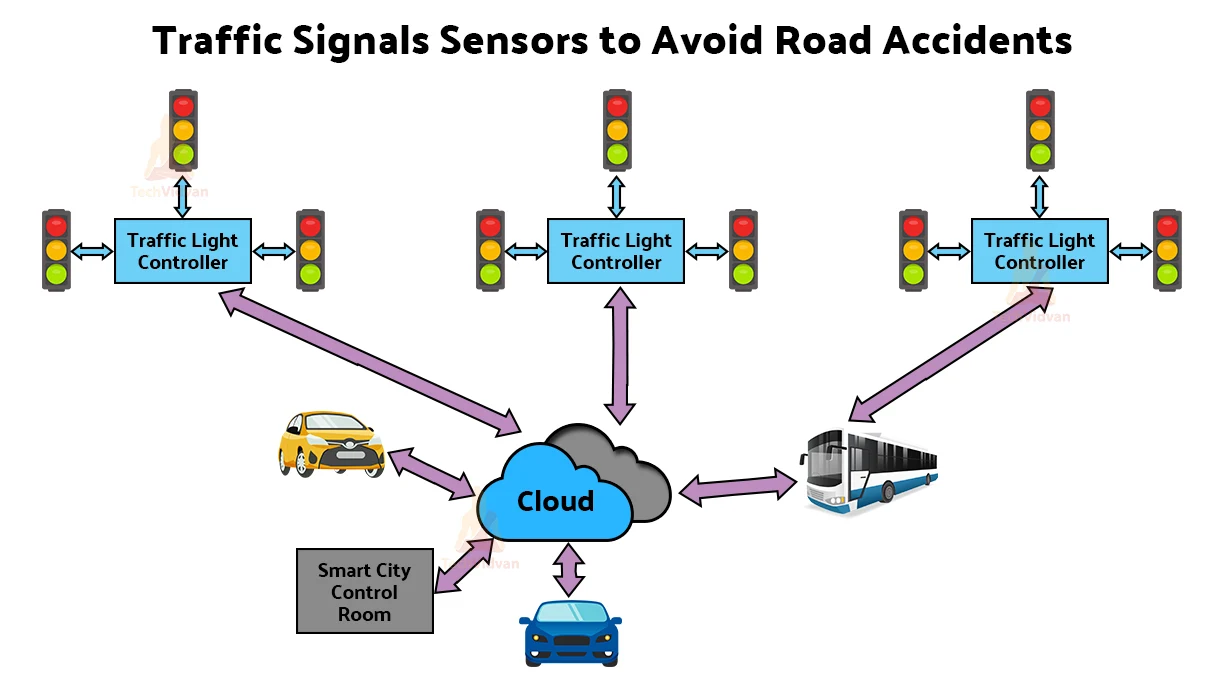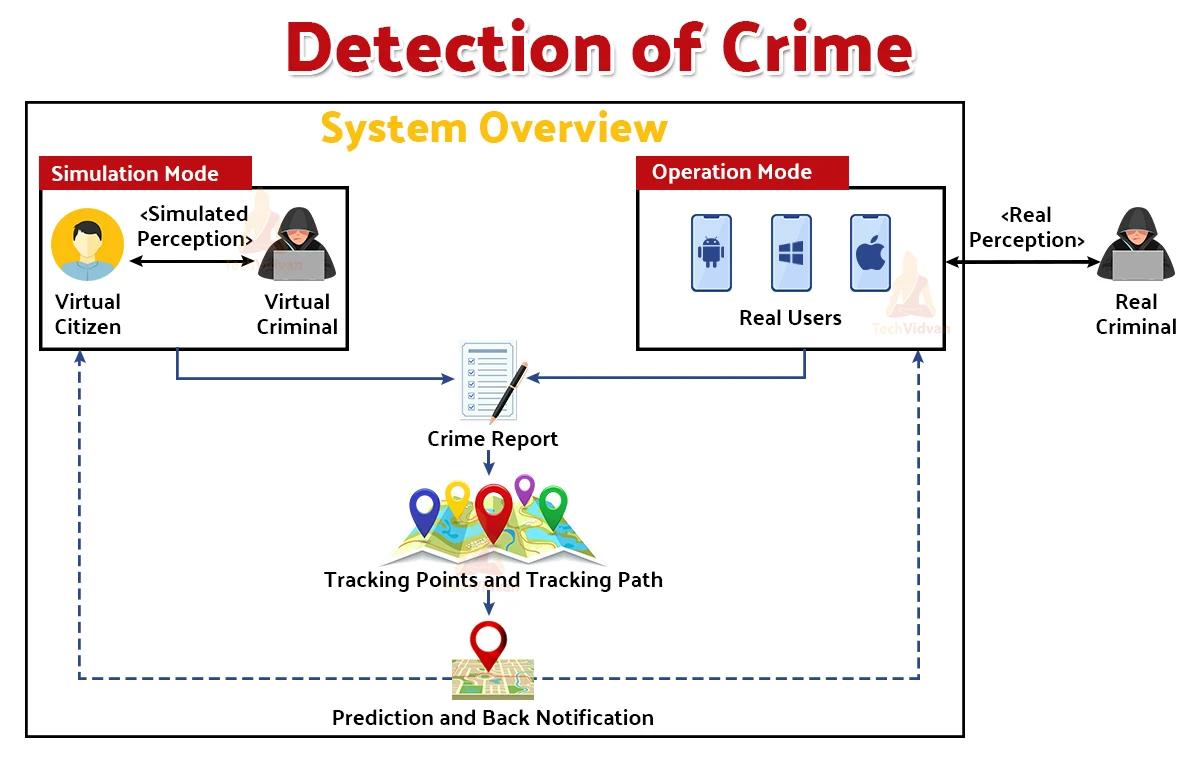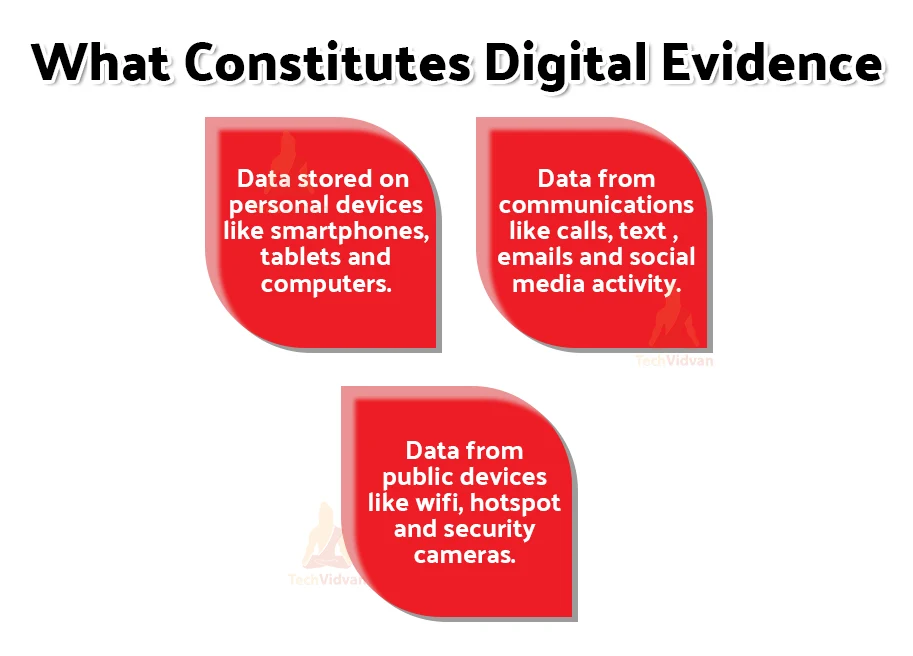Law Enforcement Applications of IoT
The collaboration between law enforcement applications and Iot requires smart devices to function actively in public places and society in general. This ensures strict adherence to the rules and guidelines by the government. The following are a few of the IoT applications in law enforcement among citizens of any country or state:
Law Enforcement Applications of IoT
a. Traffic signals sensors to avoid road accidents
Traffic control and management can be done through IoT. The government installs sensors that detect movement on the streets and send information to centres run by the police department. This helps the traffic police keep the traffic under control and helps prevent serious accidents. The sensors detect the density of traffic on streets and highways and this controls the switching off traffic lights.
IoT also helps provide live traffic updates that help drivers to switch lanes and paths to save time.
b. Wearables for officers and government officials
The government can provide smart watches to government officials. These watches keep a track of their schedule and manage information constantly. These watches also keep a check of pulse rate and send an alert in case of emergencies. The government can provide reality aids for new officers so that they can experience the stimuli of dangerous situations such as hijacks, robberies and murder. Sensors on watches track their sleep schedule, body weight, daily steps and more.
c. Drones for border patrol
Smart border protection is currently in use in western and European countries to protect borders from a far distance. Smart border protection involves the use of drones to closely monitor the situation at the borderline of the country. In case of danger, the drones send alerts to the military officials who take necessary action.
d. IoT in courts
In recent days, IoT is helping solve murders and control rates of crimes. Iot devices around the city are storing valuable data that serves as an evidence in helping to catch a criminal. The data that Iot devices around the criminal stores is used as defence. Slowly, courts are adapting to the IoT technology.
e. Policing
Iot devices are helping officers by giving information about a criminal and helping them know the location of the criminal. Security systems and alarms around the city are serving the police officers with valid and live information about the crime situation in the locality and through the internet officers can quickly find the criminal records of any citizen. In this manner, IoT is helping reduce the crime rates around the globe.
f. Maintaining Law and order with IoT
IoT also helps maintain law and order around the city. IoT enabled sensors detect if a person is wearing a helmet or not on the street. These sensors detect speedy vehicles and quickly send notifications to the drivers as well as the traffic police.
g. Detection of crime
Government can install IoT sensors and devices across the city. This helps in easy identification of the criminal and it also tracks their activity. Security alarms, sensors and systems can alert the police about any criminal in the city.
h. Gathering of evidence
The main objective of Iot is to gather data constantly and transmit it over a connection of devices. This feature of Iot is very helpful in gathering any evidence from a crime scene.
Law Enforces can access data stored in devices such as smartphones, watches and tablets and store it as evidence.
Public cameras and WiFis also largely store user information which under government demand can be accessed to recover criminal information.
i. IoT firearms
- Only legal adults with a gun license can work a smart gun. Since the biometrics on the guns check for authorization before operating the gun.
- Iot firearms record exactly where the shots were fired and the occurrences after.
- IoT helps in automatically switching on the body camera in high-pressure situations.
j. Unidentified cars
Drones offer a new form of surveillance and monitor areas where the security officials are not present. The drones and alarms raise alerts in case of suspicious activity, send details of the whereabouts and also track the criminals.
k. Smart Vehicles
Smart vehicles for police officers are equipped with various functionality. These come with cameras and voice recorders to record details of any event. The cars contain computers connected to the internet to provide real time information on the location and activity of criminals. These cars can interact with fire alarm services, ambulances and trucks.
l. Predicting and preventing crimes
Collecting and storing data is a vital part of an IoT system. This property of IoT helps prevent and detect crimes to take early precautions. Iot along with artificial Intelligence(AI) helps in predicting crime. “Heat mapping” are systems through which officers can perform data analytics to locate criminal hotspots and help understand where specific crimes occur often in a locality.
Summary
From the above article, we can understand that IoT helps diversely in law enforcement. Crime rates can be significantly reduced by introducing IoT sensors, devices and systems.



